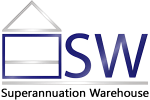- Home
- SMSF Setup
- Running SMSF
- Transferring Benefits into your SMSF
- Income in an SMSF
- Expenses in an SMSF
- Bank Accounts
- Insurance
- Members
- Unlock Growth Potential with SMSF Contributions
- Personal Super Contributions
- Government Co-contribution
- Low Income Super Tax Offset
- Spouse super contribution
- Contribution Splitting
- Personal Concessional Contribution
- Small Business Exemptions
- Concessional Contributions
- Non-Concessional Contributions
- Salary Sacrifice
- Carry Forward Concessional Contributions
- Bring-Forward Non-Concessional Contributions
- First Home Super Saver Scheme
- Downsizer Contributions Into Superannuation
- Pensions
- Estate Planning
- Guide to SMSF
- Reserves
- Advice
- NIL SMSF Returns
- Closing down an SMSF
- Services
- Investments
- SMSF Audit
- About Us
- Resources
- Single Member SMSFs
- Residency Rules
- Education
- Power of Attorney (POA)
- Illegal access to Super
- Foreign Account Tax Compliance Act (FATCA)
- Financial Advice
- Robo Advice
- Home
- Sale of Shares in an SMSF
Sale of Shares in an SMSF
If an SMSF holds shares, the shares must be disclosed at market value at year end. Any unrealised gains or losses will be accounted for in the Fund’s end of year Income Statements. The Fund does not need to pay any tax on the unrealised gains or losses. However, when the shares are sold, the realised capital gains will be taxed.
The taxable amount will depend on how long the shares were held by the Fund and which parcel of shares were sold. The methods of parcel selection are discussed below.
Period held
Any taxable capital gains will be included in the Fund’s assessable income in the annual tax return. Taxable capital losses are carried forward to the following financial year and can be offset against any future taxable capital gains. Generally, if the shares are held for longer than 12 months, the proceeds are taxed at 10%.
If shares are held for less than 12 months before they are sold, and on the basis that the Fund is a complying SMSF, the proceeds from the sale are taxed at a concessional rate of 15%
If shares are held for more than 12 months, capital gains are taxed at a discount rate of 10% rather than 15%.
If the Member is in pension phase when the shares are sold, the capital gains will be taxed at a rate of 0%. A good strategy might be to purchase shares and keep these till the Member has retired. This method will ensure that the capital gains are tax free.
For more information on account based pension, please see here:
Selecting which parcels of shares are sold
If an SMSF decides to sell a parcel of shares, the method used to select that parcel will affect the total capital gains tax that the Fund will need to pay.
Generally, there are four methods of selecting a parcel of shares for sale
Using this method, sale of shares will result in the lowest taxable capital gains. This would involve selling shares with the highest cost base. At Superannuation Warehouse, we use BGL Simple Fund as the accounting software for our clients’ Funds. The BGL Simple Fund will automatically sell all parcels in the most tax effective CGT method.
This method works in exactly the opposite way to the one noted above. Shares with the lowest cost base are selected to be sold.
If a Fund decides to sell shares in a company that are bought on different days, under the FIFO method, the shares that are purchased the earliest are sold first. For example, a Fund bought 200 BHP shares on 1 July 2017 and another 300 BHP shares on 1 August 2017. The Trustees then decides to sell 400 BHP shares on 1 September 2017. The shares that are sold first will be the 200 shares purchased on 1 July 2017 followed by 200 of the shares bought on 1 August 2017.
The FIFO method works in exactly the opposite manner to the FIFO method described above. In other words, the latest shares bought are sold first. In the same example noted in the point above, the first shares to be sold on 1 September 2017 will be the 300 shares bought on 1 August 2017 followed by 100 of the shares bought on 1 July 2017.
Under this method, the total cost of shares from the same company is evenly divided between the number of shares that the Fund holds in that company. Unfortunately, BGL Simple Fund does not allow for the usage of this method.
The Most Tax Effective method is the default method that we use when we prepare a set of financial statements.
For more information regarding the completion of the annual return and the related capital gains schedule instruction, please see our taxation page:
Have Questions?
Ask Superannuation Warehouse experts
We are Melbourne based with clients throughout Australia. Our SMSF administration service is mostly paperless. This enable us to charge a fair fee, resulting in a good value-proposition for you.
Superannuation Warehouse is an accounting firm and do not provide financial advice. All information provided has been prepared without taking into account any of the Trustees’ objectives, financial situation or needs. Because of that, Trustees are advised to consider their own circumstances before engaging our services.
Follow us:
Shop 1/116 Balcombe Rd, Mentone, VIC 3194
03 9583 9813 or 0411 241 215
admin@superannuationwarehouse.com.au




